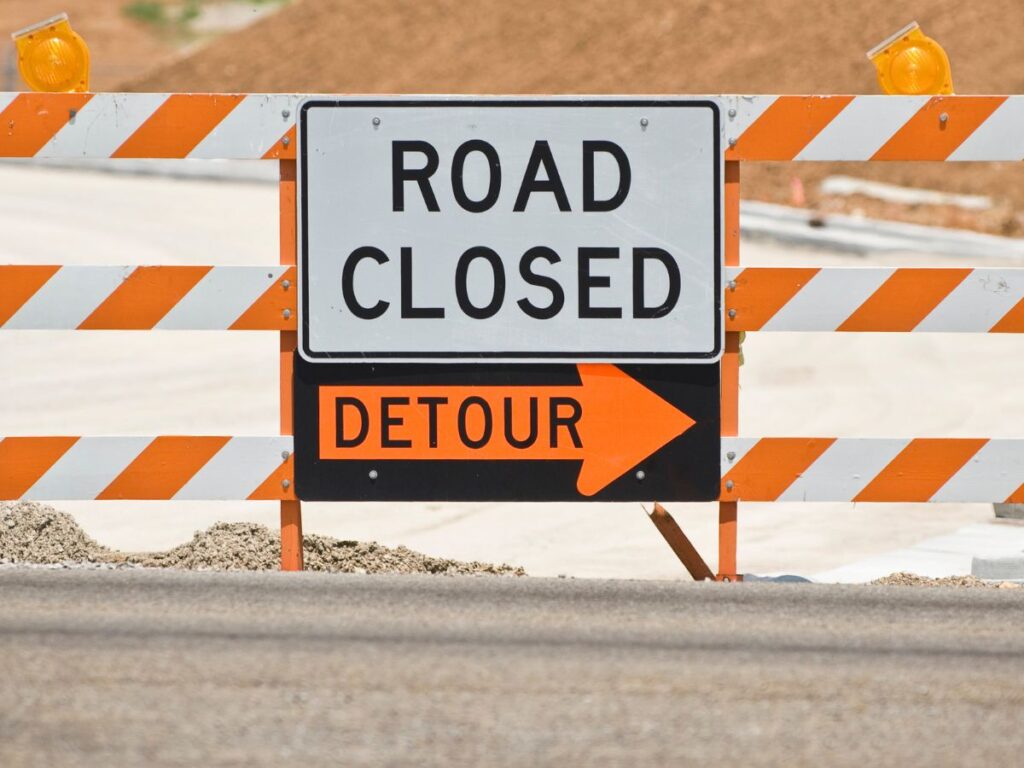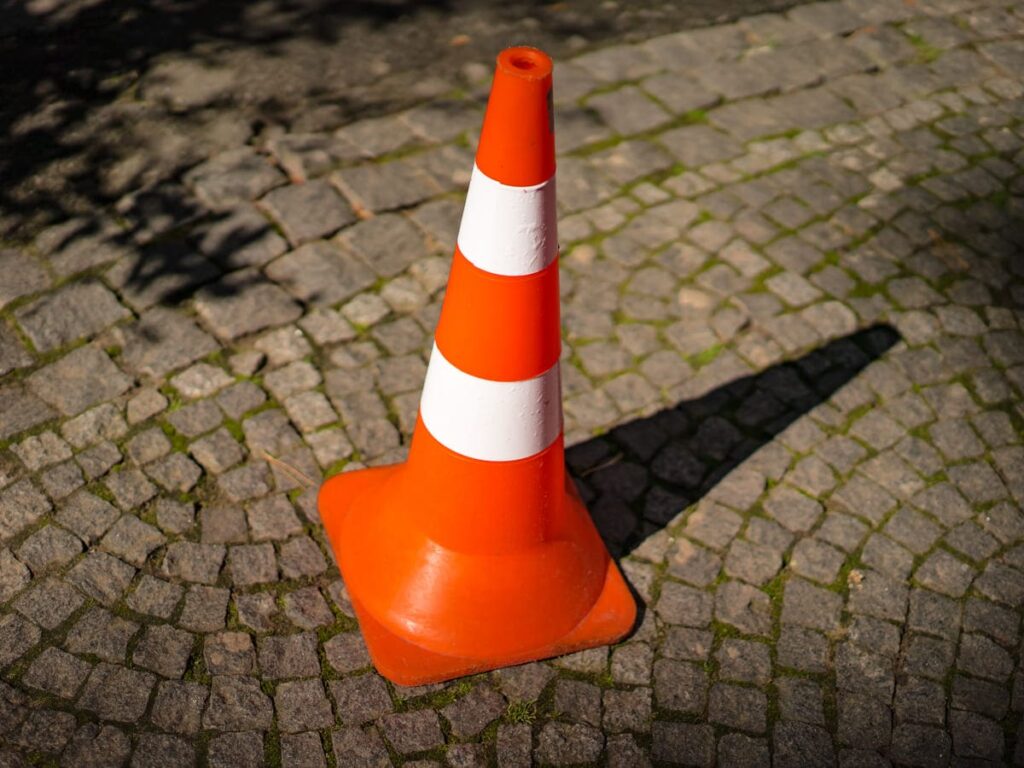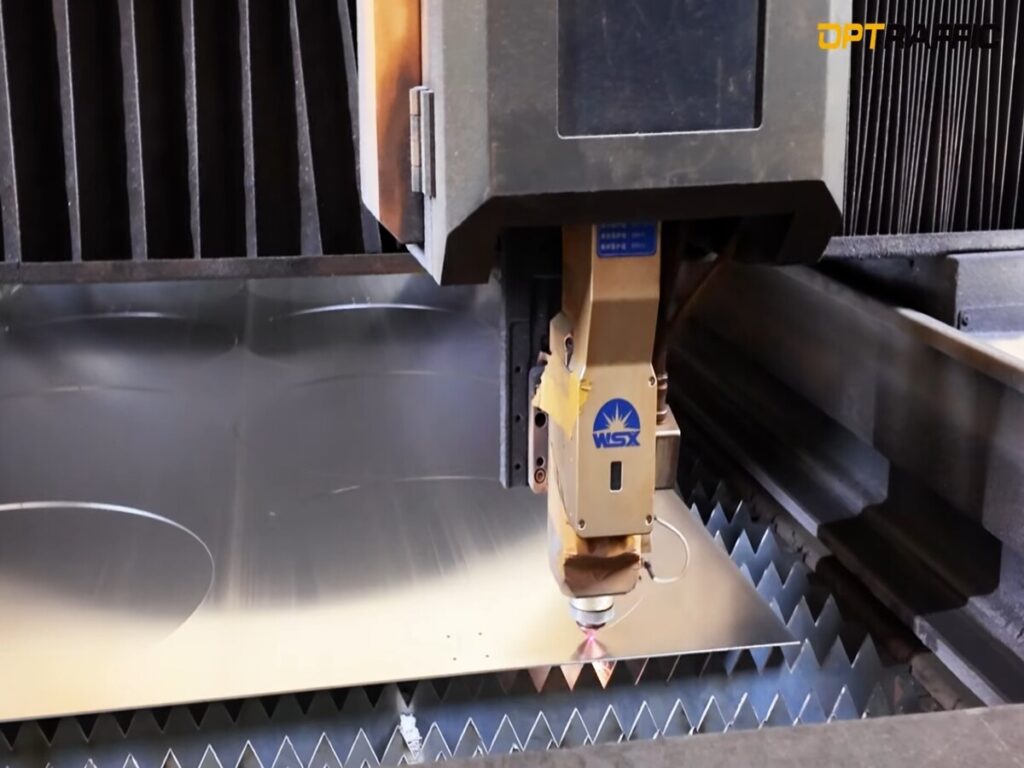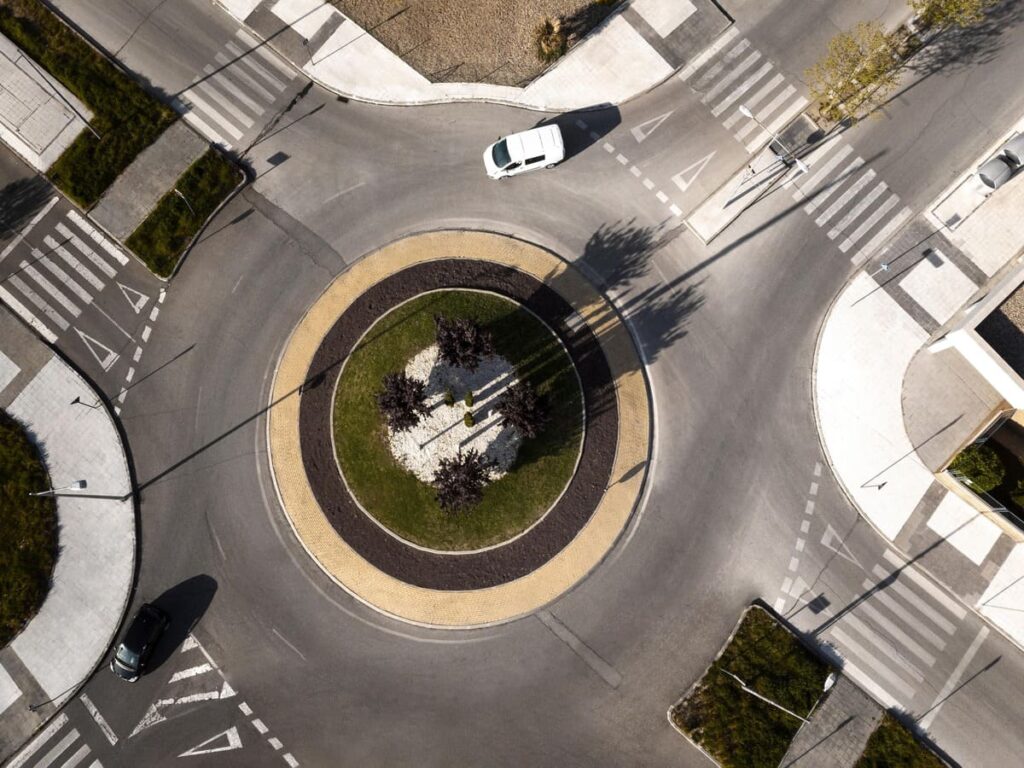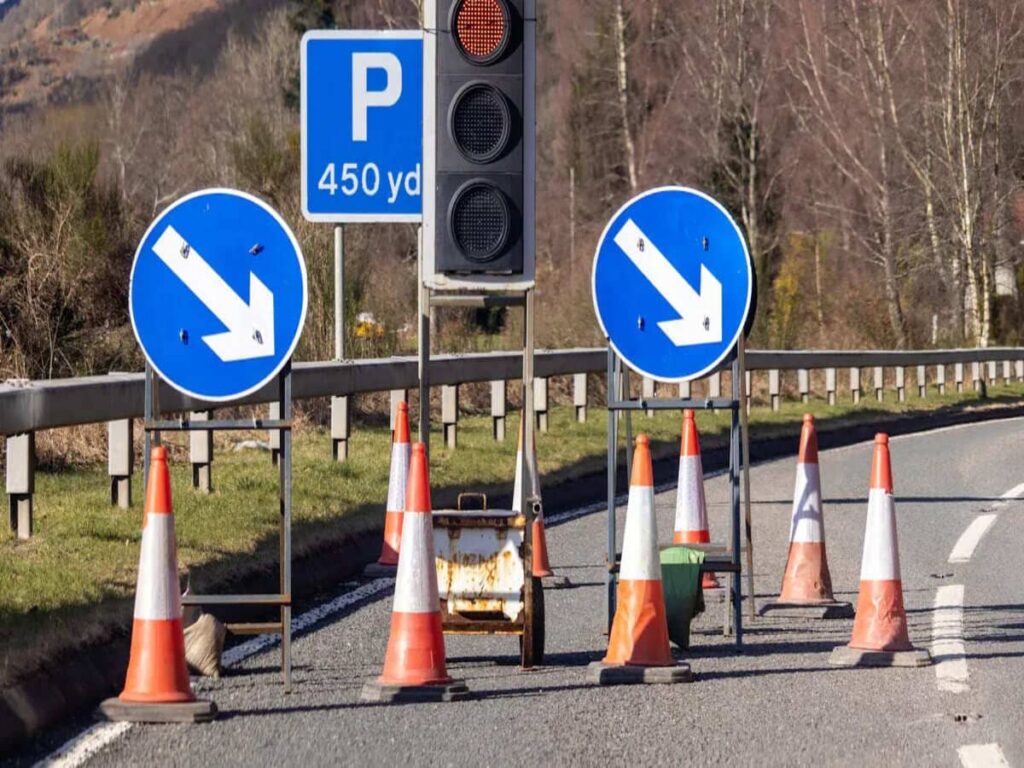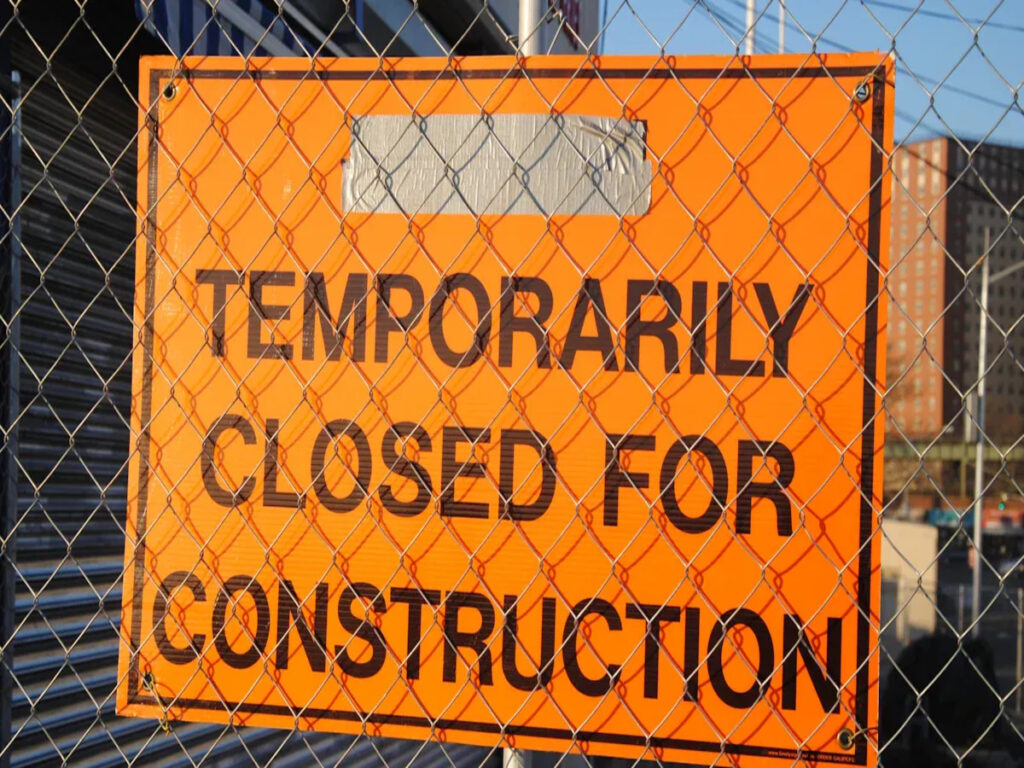
As cercas de segurança são muito importantes para manter os sites seguros. Cercar faz fronteiras claras para manter as pessoas afastadas do perigo. Isso ajuda a diminuir os riscos e mantém todos em segurança. Estudos mostram uma cerca de segurança feita de materiais fortes que dura muito tempo. Esses materiais incluem HDPE, aço, e alumínio. Algumas cercas têm recursos especiais como malha anti-climb. Eles também têm sistemas interligados para parar os invasores. A segurança fica ainda melhor com vigilância digital e controle de acesso. Esta configuração impede as pessoas de entrar sem permissão. Também ajuda as pessoas a responder rapidamente a problemas. A esgrima é forte e pode ser usada de várias maneiras. É por isso que é uma maneira confiável de manter os sites seguros.
Optraffic oferece uma ampla variedade de cercas de segurança designed for maximum protection and durability. Our fencing solutions are made from high-quality materials and can be tailored to meet the specific needs of your site. Explore our range today to ensure your construction or worksite remains secure and well-protected.
Takeaways -chave
- Safety fences make strong barriers. Eles mantêm as pessoas seguras. They show where dangerous areas are. They stop people who should not enter.
- Tall and strong fences help stop theft. They also stop vandalism and accidents. Features like anti-climb mesh and secure gates help too.
- Temporary fences are quick to set up. They protect short-term sites and events. Permanent fences give security for a long time.
- Using steel, alumínio, or HDPE makes fences last longer. These materials stand up to bad weather. They are good for the environment because they can be recycled.
- Checking fences often and putting up clear signs is important. This helps sites follow safety rules. It lowers risks and keeps workers and the public safe.
Safety Fence Security
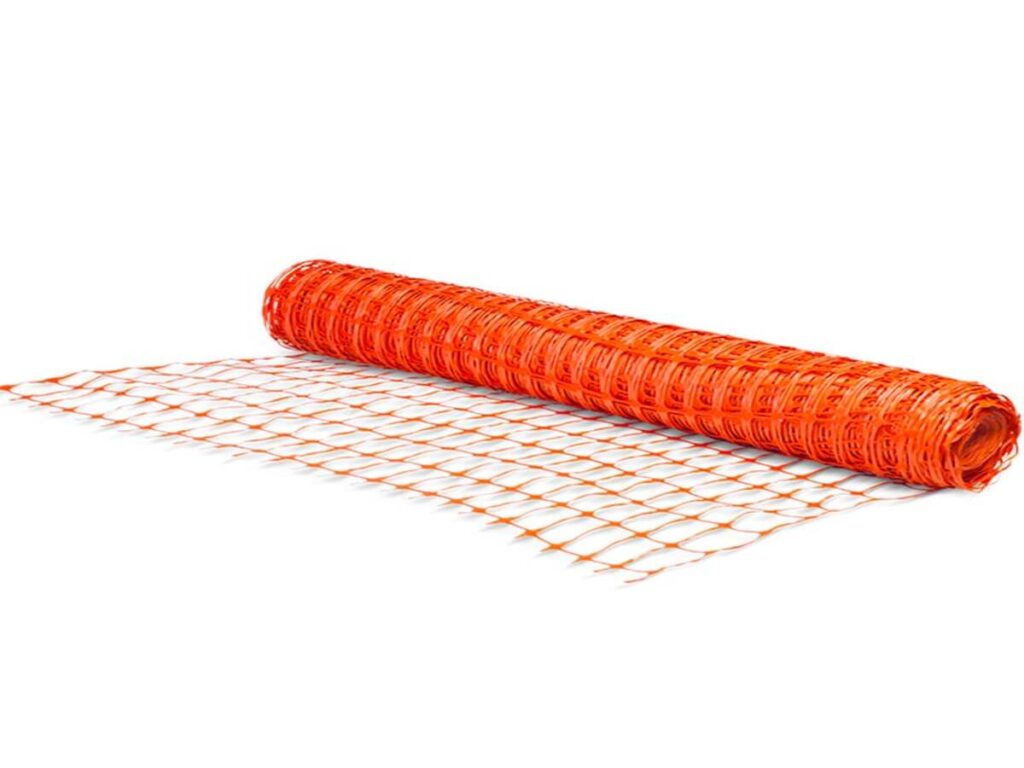
Preventing Unauthorised Access
Fencing is the first way to keep people out. A safety fence shows where the public must stop. It also shows where only workers can go. Security gets better when fences are tall and strong. Chain-link fences are hard to climb. They are even harder with anti-climb mesh or barbed wire. Security teams sometimes bury or weigh down fences. This stops people from lifting them. Gates with strong padlocks or electronic locks let only certain people in.
Dica: Clear signs like “No Trespassing” ou “Propriedade privada” help keep people out. These signs also support other security steps.
Security teams check gates and fences often. This makes sure they stay locked and safe. Giving someone this job lowers the chance of problems. Good fences help cameras and guards work better. Fences make it easier to see who comes in. This is important for any security plan.
Deterring Theft and Vandalism
Strong fencing keeps tools and equipment safe. Perimeter fencing blocks people from getting in. It also stops theft and vandalism. Anti-climb toppers, barbed wire, and anti-cut fabric make fences stronger. These work with cameras, Alarmes, and access controls.
- Fencing is always there and does not need power.
- Cameras and alarms help protect and give proof if something happens.
- Lights and signs show that security is in place.
Case studies show anti-climb fences stop trespassing. Por exemplo, one factory used steel fencing with anti-climb features. Depois disso, no one broke in after hours. Insurance costs also went down. This shows strong fencing and good security work well together.
Protecting Workers and Public
Safety fencing keeps workers and the public safe. Rules say dangerous areas must have strong fencing at least one metre high. This barrier stops people from walking into danger. It also keeps out those who should not be there.
- Fencing keeps workers safe from outside trouble.
- The public stays safe by staying outside the fence.
- Signs and covers help lower risks even more.
Fencing helps follow health and safety rules. It keeps dangerous areas away from the public. Only trained people can go into risky places. This makes the site safer for everyone.
Site Safety

Managing Hazards
Fencing helps keep people safe at busy sites. Workers and visitors can face many dangers here. Some dangers are slips, viagens, and falls on rough ground. Others are working high up or near moving machines. People can also get hurt by dust, produtos químicos, or loud noise. Fencing keeps risky areas apart from safe ones. This stops people who should not be there from getting close to danger.
- Deslizamentos, viagens, and falls happen on bumpy ground.
- Big machines and vehicles can hurt people in work zones.
- Pó, produtos químicos, and loud sounds can harm health.
A safety fence shows where danger is. It helps people walk safely and blocks unsafe places. Temporary fencing can move as work changes. This keeps the site safe all the time. Using fencing helps companies follow safety rules and stop accidents.
Observação: Good fencing keeps workers safe and protects the public. Signs on fences warn everyone about dangers inside.
Controle da multidão
Big events need good crowd control to keep people safe. Fencing helps guide people and stops too many in one place. Organisers use temporary fencing to make clear paths and exits. This stops people from going where they should not. It also helps crowds move without problems.
Best ways to control crowds include:
- Check the place to find busy and risky spots.
- Plan where to put fences and staff for best control.
- Work with police and medics for quick help.
- Use barriers and signs to guide people and stop confusion.
- Put trained staff at important spots to watch the crowd.
- Use cameras and alerts to get updates fast.
- Tell people what to do so they do not panic.
| Recurso | Safety Fences (Barreiras de controle de multidão) | Other Crowd Control Methods (Barricadas de trânsito) |
|---|---|---|
| Main Use | Manage people, make safe areas | Control or move vehicle traffic |
| Material | Light steel or plastic | Heavy plastic, concreto, ou metal |
| Altura | Sobre 3-4 pés, stops climbing | Mais alto, blocks cars |
| Portabilidade | Easy to set up and move | Mais pesado, hard to move |
| Melhor uso | Eventos, desfiles, segurança das pessoas | Trabalho na estrada, controle de tráfego |
Safety fences are good for short events and city sites. They keep people safe by keeping them away from danger. Using fences with signs and trained staff makes everyone safer.
Safe Perimeters
Making safe borders is very important for site safety. Temporary fencing is a barrier that can be put up fast and moved if needed. This fencing stops people from getting in without permission. It also keeps equipment safe and keeps the public away from danger.
Steps for safe borders:
- Check what the site needs and what work is done.
- Pick the right fencing, like steel panels or mesh.
- Make sure experts put up the fence so it is strong.
- Check fences often and fix any damage.
- Use clear signs to show where people can and cannot go.
Temporary fencing helps sites follow safety rules. Por exemplo, building sites often need fences at least six feet high with locked gates. These fences use strong materials and meet safety standards. Fencing marks out the border, mantém as pessoas seguras, and helps follow the law.
Dica: Checking and fixing fences often keeps the site safe during the whole project or event.
Tipos e materiais
Temporary Fencing
Temporary fencing is a fast and easy way to make a barrier. People use it at events, festivais, e construindo canteiros. Construction fence hire companies give panels that workers can put up or take down quickly. Por exemplo, a 100-foot fence can be set up or removed in just 15 minutos. This helps teams change things fast when needed.
Temporary fencing stands by itself and does not need holes or posts in the ground. Workers can move it or make it bigger or smaller as the job changes. Many people use it to keep crowds safe or protect tools at short-term sites. Construction fence hire companies give strong panels that follow safety rules and can handle wind and rain.
Observação: Temporary fencing saves money for short jobs and helps keep sites safe and tidy.
Permanent Solutions
Permanent fencing is best for places that need to stay safe for a long time. People put these fences in with posts set in concrete. This kind of fencing shows where land ends, keeps buildings safe, and stops trespassers. Permanent fencing uses strong materials like steel, alumínio, or wood. These fences last many years and need checks to stay strong.
Permanent fencing takes more time to put up than temporary fencing. Workers might need a few days to finish, but the fence will be strong and last through bad weather. Many people pick permanent fencing for schools, fábricas, or homes where safety and privacy are very important.
| Recurso | Temporary Fences | Permanent Fences |
|---|---|---|
| Instalação | Rápido, no digging, fácil de mover | Labour-intensive, posts in concrete |
| Use Duration | Curto prazo, eventos, canteiros de obras | A longo prazo, property boundaries |
| Flexibilidade | Highly flexible, can be relocated | Fixed location, not easily changed |
| Nível de segurança | Adequate for temporary needs | Higher security, deters trespassers |
| Custo | Menor adiantamento, often rented | Maior adiantamento, long-term investment |
Escolhas de materiais
The material you pick changes how long the fence lasts and how strong it is. HDPE, aço, and aluminium are good for both temporary and permanent fencing. HDPE does not get damaged by water, produtos químicos, ou mau tempo. Steel is very strong and can take hits and storms. Aluminium does not rust and looks good in sun and rain.
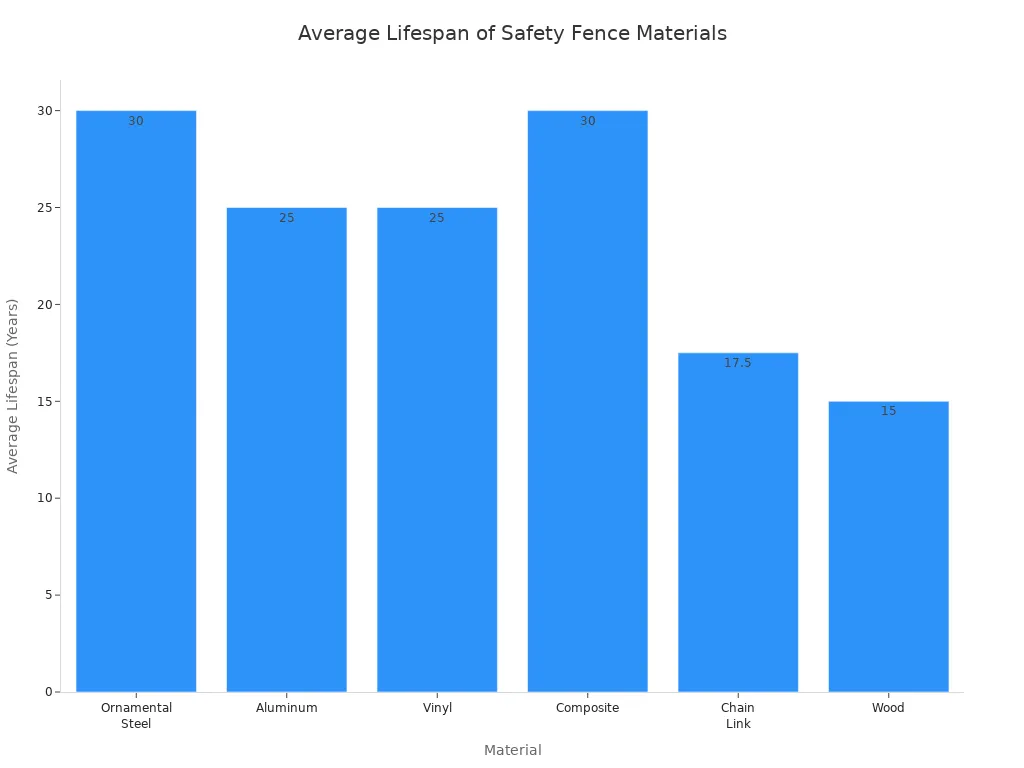
| Material | Durabilidade & Vida útil | Resistência ao tempo |
|---|---|---|
| Aço | 20-40 anos | Muito forte, lida com clima duro |
| Alumínio | 25-50 anos | Resistente à ferrugem, keeps shape and colour |
| HDPE | Alto, 20+ anos | Resists moisture, produtos químicos, e corrosão |
Construction fence hire companies use these materials for temporary fencing because they last in tough weather. Permanent fencing also uses these materials, so it lasts a long time and does not need much care.
Compliance and Sustainability
Padrões regulatórios
Organisations use safety fences to follow the law. These fences make safe spaces around dangerous machines or special areas. They stop people from going where they should not. Isso diminui a chance de acidentes. Safety barriers also help in emergencies. They show people where to go to get out safely. Companies use these barriers to show they care about safety.
- Safety fences stop workers from falling or getting hurt by machines.
- They help control how people move and keep them away from danger.
- Barriers help companies follow rules from groups like OSHA, Ansi, e ISO.
- Checking fences often and training workers helps stop accidents.
- Putting up fences the right way makes sure they work and meet rules.
Observação: Following these rules keeps workers safe and avoids legal trouble.
Custo-efetividade
Safety fences are a smart way to keep sites safe. It costs about £1,500 to £4,000 to put up a fence. The price depends on what it is made of and how big it is. Chain-link fences cost less than wood or vinyl. Electric fences can save money because they do not need much care. They can also take the place of security guards. Some companies pay for electric fences each month, which helps plan spending.
Buying good fences means you do not fix them as much. Checking and fixing fences keeps them working and stops big repairs. Polymer fences bend and go back to shape, Então eles duram mais. Isso economiza dinheiro com o tempo. Many companies get their money back in two years because they spend less on repairs and have fewer accidents.
Impacto ambiental
The material used for fencing affects the environment. Aluminium and steel fences last a long time and can be recycled. Recycling aluminium uses less energy than making new metal. Steel is strong and can be recycled too, o que significa menos desperdício. HDPE fences are light and can be recycled, but soft plastics are harder to recycle.
| Material | Uso de energia (GJ/ton) | Recycling Energy (GJ/ton) | Environmental Notes |
|---|---|---|---|
| HDPE | N / D | N / D | Most impact comes from using electricity; recycling helps, but burning is bad. |
| Aço | 25.2 | 9.43 | Needs lots of energy to make; recycling saves energy; strong and recyclable. |
| Alumínio | 140 | 11.7 | Uses lots of energy to make; recycling saves energy and stops greenhouse gases. |
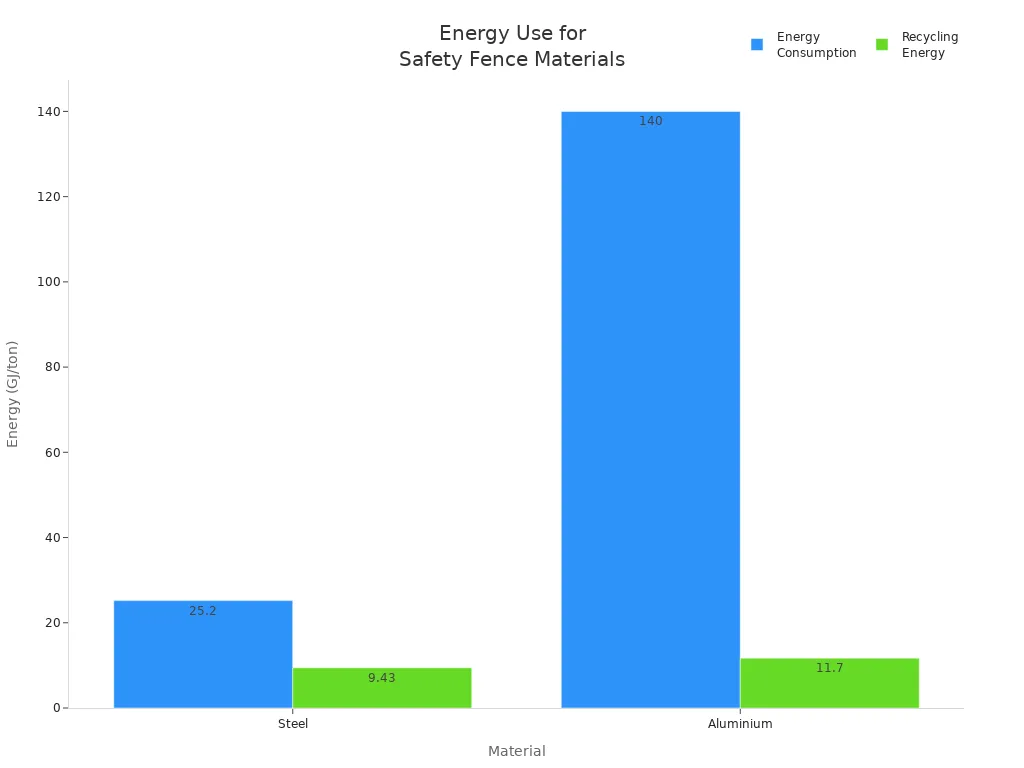
Many companies now use recycled materials and save energy. Some programmes recycle old fences to stop waste. A few companies use bamboo or living fences to help the environment. Escolher forte, recyclable materials and putting up fences the right way helps keep the planet clean.
Safety fences give lots of benefits at construction and event sites.
- They make tough barriers that keep out intruders and help stop theft or vandalism.
- Fences help guide people, show where danger is, and help follow the rules.
- New designs can fit many places and jobs, so they last long and can be used in different ways.
Perguntas frequentes
What materials work best for safety fences?
Aço, alumínio, and HDPE are very strong. Steel is tough and lasts a long time. O alumínio não enferruja, so it stays nice. HDPE can handle bad weather and chemicals. Each material is good for different jobs and lasts for years.
How often should safety fences be checked?
Site managers need to check fences every week. They should look for broken parts or missing signs. Fixing problems fast keeps everyone safe and follows the rules.
Can temporary fences handle strong winds?
Sim, many temporary fences use stabilisers or heavy bases. These help the fence stay up when it is windy. Putting the fence up the right way makes it safer and stops accidents.
Do safety fences help with legal compliance?
Safety fences help sites follow the law and safety rules. They show where danger is and keep out people who should not enter. This lowers accidents and helps avoid getting fined.
Are safety fences environmentally friendly?
Many safety fences use steel and aluminium that can be recycled. Some companies reuse old fence panels. HDPE fences last a long time and can also be recycled, which helps cut down on waste.

